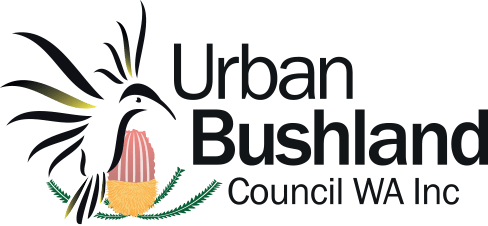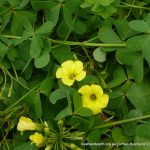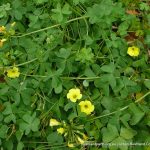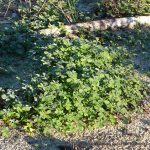Soursob
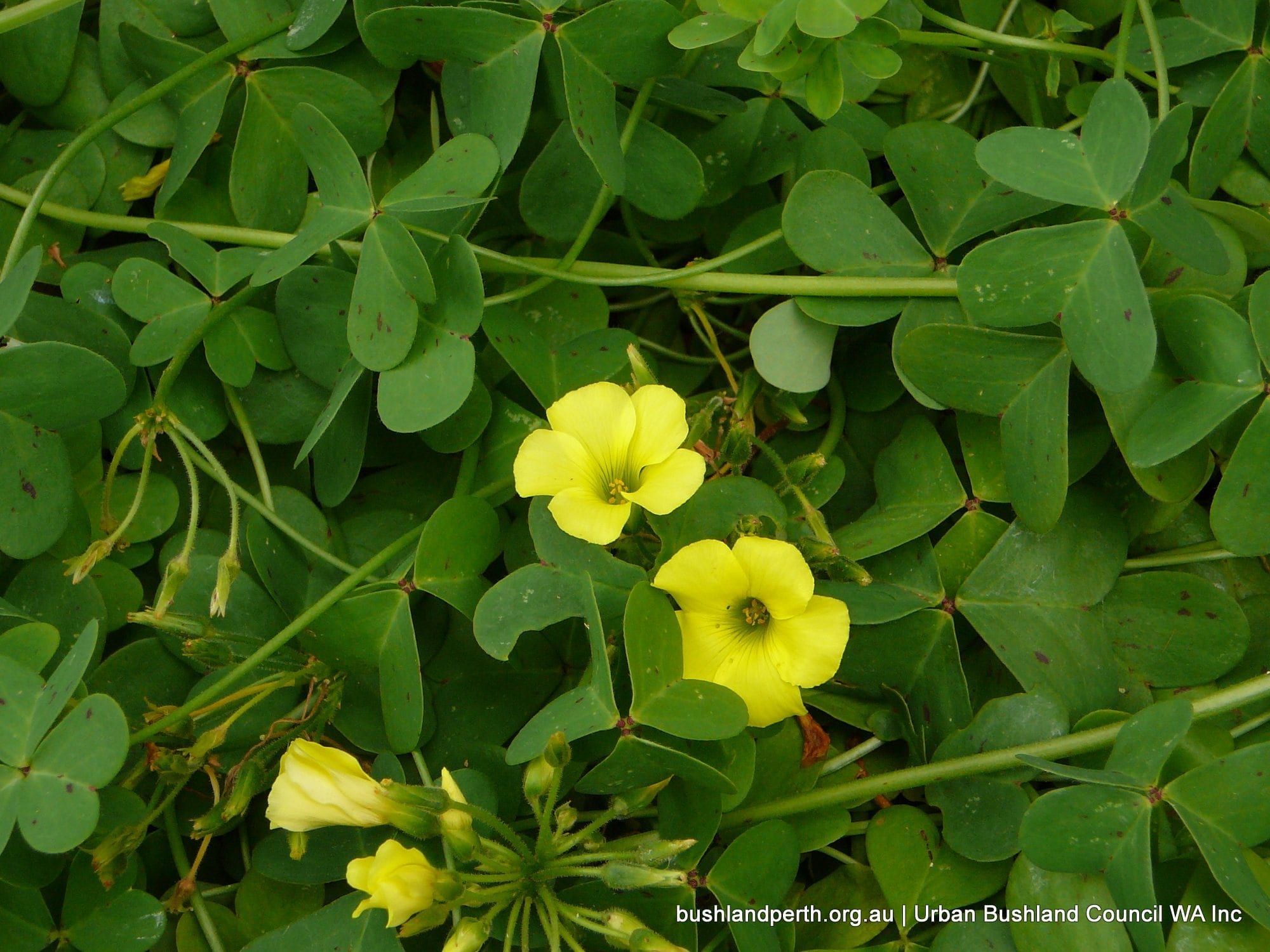
Common name
Soursob
Scientific Name
Oxalis pes-caprae
Type of plant
Bulbs or Corms
About this weed
Oxalis pes-caprae is a Declared Pest under the Agriculture and Related Resources Protection Act 1976. It was originally a native of South Africa and is now a major weed especially in urban bushland . There is some evidence that it may cause oxalate poisoning in sheep.
Description
This is a distinctive perennial herb with many bright yellow flowers and usually three heart-shaped spotted or marked leaves. From late autumn though to spring the yellow flowers carpet bushland, public gardens and anywhere they can else they can get established. Oxalis forms large clumps and usually reproduces by bulbils rather than seed. Generally Oxalis will survive fire.
Impact on Bushland
Soil disturbance can greatly enhance the invasion of Oxalis in bushland and there is some evidence it influences soil phosporous cycling.
Location
Oxalis prefers disturbed sites and is a common weed of bushland and gardens. It is a major weed of crops, pastures, orchards, gardens, roadsides, wastelands and disturbed native vegetation in the south-west of the State.
Priority for removal
High: major threat to the conservation values of Banksia woodlands and South-West Province.
Management (hand)
Exercise care if manually removing as physical removal can result in spread of bulbils. As a Declared Pest under the Agriculture and Related Resources Protection Act 1976 there are documented control strategies in place.
Management (herbicide)
Spot spray metsulfuron methyl 0.2 g/15 L + Pulse, or 1% glyphosate. Apply at bulb exhaustion, generally just on flowering. Read the manufacturers’ labels and material safety data sheets before using herbicides. As a Declared Pest under the Agriculture and Related Resources Protection Act 1976 there are documented control strategies in place. Optimum time for herbicide treatment is June and July.
Flowering month/s
May, June, July, August, September
Flower colour/s
Yellow
Information source
https://florabase.dpaw.wa.gov.au/browse/profile/4356
Additional information
https://florabase.dpaw.wa.gov.au/weeds/swanweeds/ and https://florabase.dpaw.wa.gov.au/browse/profile/4356
Hussey, B.M.J., Keighery, G.J., Dodd, J., Lloyd, S.G. and Cousens, R.D. (2007) Western weeds. A guide to the weeds of Western Australia, Second Edition, The Weeds Society of Western Australia, Victoria Park, Western Australia.
